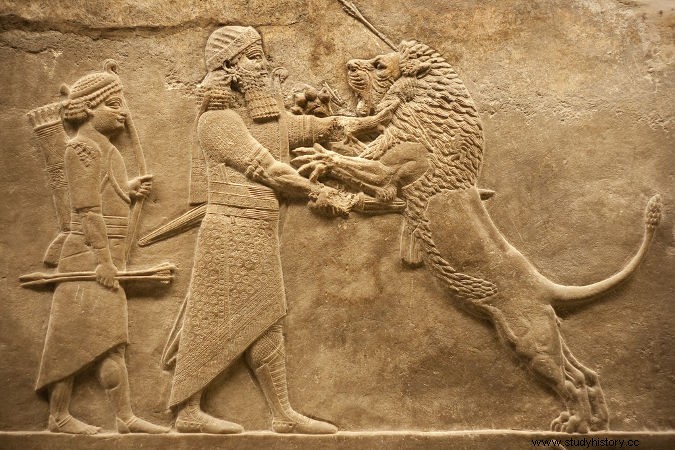
By Me. Cláudio Fernandes
The peoples Assyrians are among the most prominent of those that flourished in the Ancient Mesopotamia , that is, in the region situated between the Tigris and Euphrates rivers, where Iraq and Syria are today. The Assyrian empire took on enormous proportions, occupying many territories in the Middle East, Northeast Africa and Asia Minor.
Assyrian civilization began to develop in the Mesopotamian region known as Assur Plateau , located in the North, on the banks of the Tigris River. This development began around 1300 BC, extending to 612 BC, when the last king fell. Many of the urban centers built by the Assyrians are, today, strongholds of great historical and archaeological value. Cities like Nineveh, Assur and Nimrod are among these centers.
The impact of the Assyrian presence in the Middle East can be seen in several reports from other peoples who lived with them. An example is that of the Hebrews, who, in several passages of the Old Testament books, cite Assyrian references, such as the city of Nineveh. Among the main characteristics of the Assyrians was the fact that they were essentially a civilization of warriors, that is, a militarized society, starting with the royal lineage.
The Assyrian kings were, first and foremost, warlords and ruled with the help of a military elite. Because of this intimate relationship between administrative activities and war activities, the Assyrians are pointed out by historians as the creators of the first organized army in the world. This aspect guaranteed them a great ability to submit other peoples to their yoke, as well as a large extension of land, without losing the ability to administer them.
One of the methods used by the Assyrians to maintain their hegemony over conquered territories was the practices of extreme cruelty against captured enemy warriors. The vanquished soldiers suffered since mutilations (fingers, ears, noses and eyes plucked out) until impalement, which consisted of inserting a wooden piercing stake into the anus or navel.
Among the main kings that the Assyrians had, stood out Ashurbanipal , whose reign spanned from 668 to 627 BC. This king was responsible for building the famous Library of Nineveh , which contained thousands of clay tablets with cuneiform writing. The “Epic of Gilgamesh”, one of the main texts of the Mesopotamian tradition, has long been preserved in this library.
